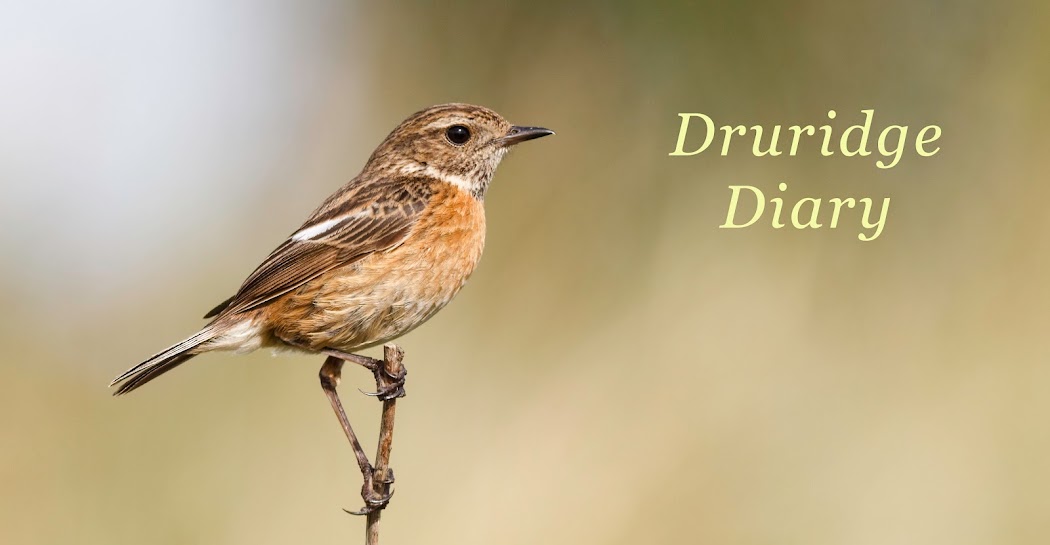Meadow Pipits don't eat fish - right?
yes this is right
Wrong.
I was out for a walk at Druridge this morning and by the bridge over the Dunbar Burn I snapped away at Meadow Pipit on a post. I noticed two things - the bird looked wet, I presumed from being in the wet grass and it was carrying a big bit of food. It wasn't until I got home and looked at the photos on the camera and zoomed in that I realised the food item was a small fish and the bird was very wet because it had been fishing, presumably in the shallow bit of the Dunbar Burn.
 |
| Meadow Pipit with a fish! |
A look through BWP and HBW showed no mention of Meadow Pipits taking fish - their are a few records of them wading though water to take larvae and other aquatic invertebrates but not fish. I am only presuming that the bird went on to eat the fish of course. The fish looks like a Stickleback.
Here is a heavily cropped shot
 |
| This shot shows how wet the bird was |
I feel a note to BB coming on...
Or maybe not - an update.
Stewart Sexton has re-identified the fish as a moth. A moth masquerading as a fish. It is now my life's mission to find a meadow pipit catching fish.
Other than
fish moth-eating Meadow Pipits other highlights from this morning included a good number of Swifts still, decent southerly Sand Martin passage, a juvenile
Whinchat (first for two years on the patch) and a lot of warblers. I presumed the warblers were mostly locally reared birds as some, like these Whitethroats and Willow Warblers were still being fed by adults but the number and reports from other birders suggest this might have been more of a broad-front movement.
 |
| One of about 20 swifts feeding over the bushes |
 |
| Juvenile Whitethroat waiting for its next feed |
 |
| Willow Warbler |
 |
| male Linnet |
The Budge fields are drying out quickly and the Avocet family have relocated to the northern side of the fields to find water and the mud held only a flock of Dunlin.
Visits at the weekend were confined to early morning or late evening to avoid the crowds. On Sunday morning, Swallow passage was evident with about 60 birds south in 40 minutes. A
Wood Sandpiper and juvenile
Ruff were noteworthy on the Budge fields. A bird club trip led by Tim Dean were loitering in the dunes.
 |
| Eye-spy |
On Saturday evening, I had been trying to pin down the tails of a
colour-ringed Common Gull in the roost without success, the light was going when I made my way back over the dunes to see a flock of least 20 L
ittle Egrets coming into roost in the Willows at the western end of the big pool. It was like being in La Janda in southern Spain apart from I wearing a thick coat and was still cold!









No comments:
Post a Comment